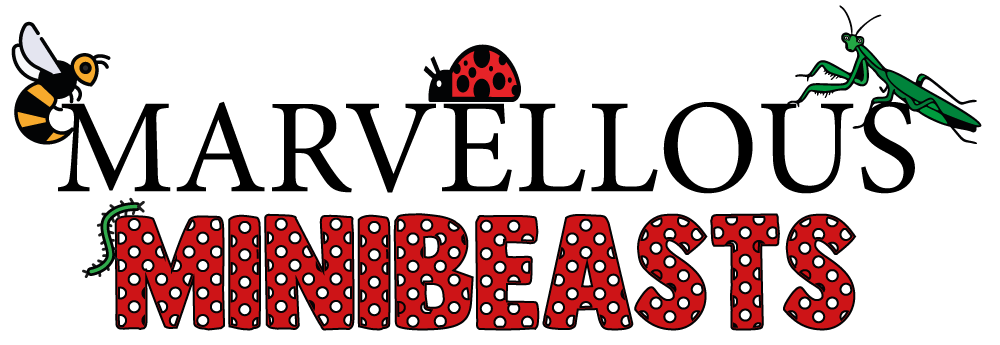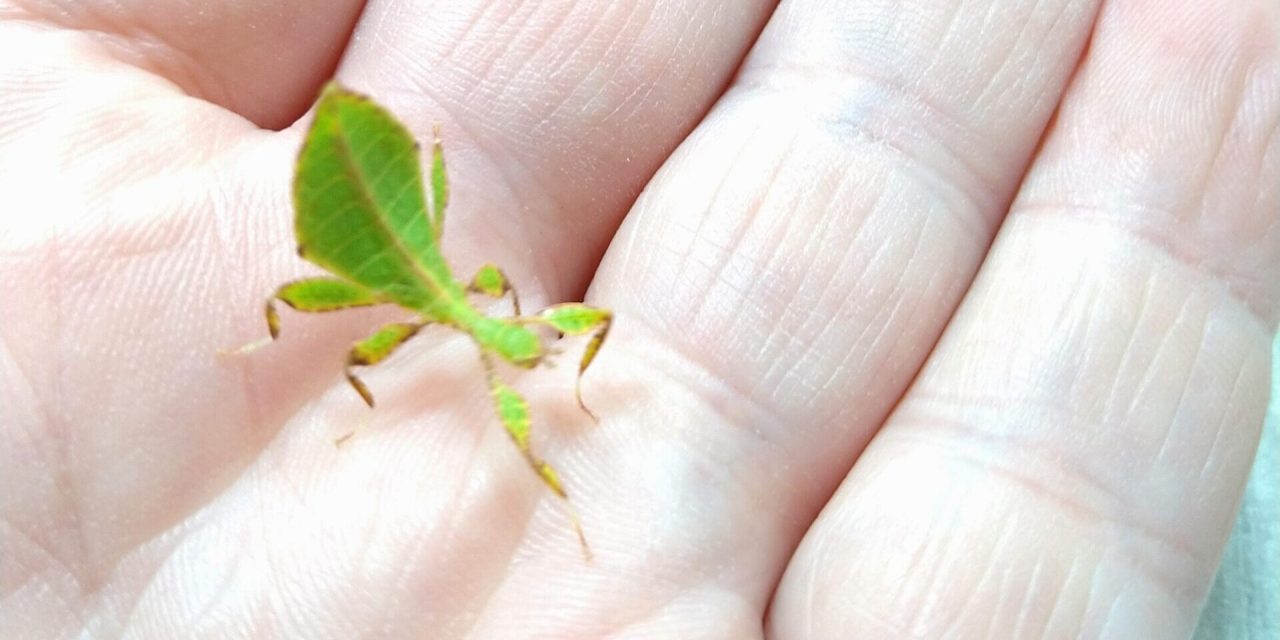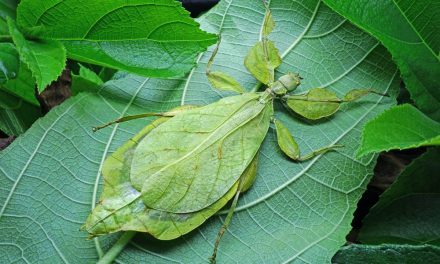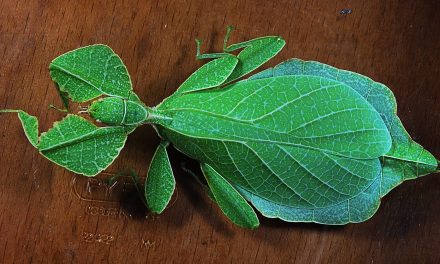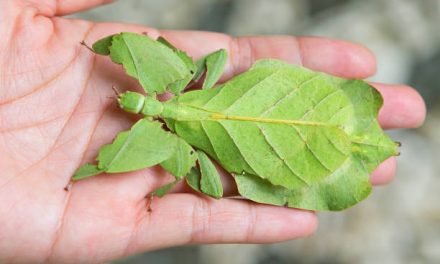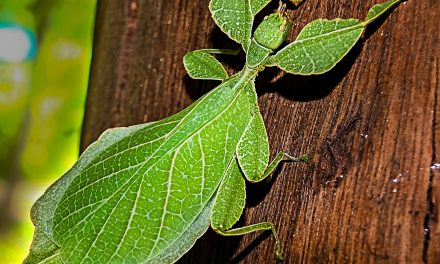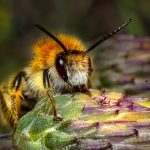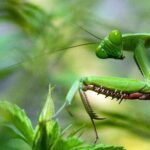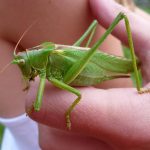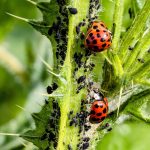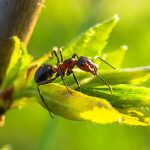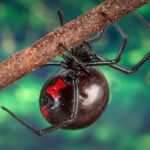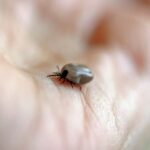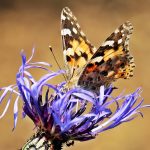Leaf insects make fantastic pets for children of all ages. They are fascinating, easy to look after, but they are also completely harmless, which is what makes them a great pet. If you are wanting to start keeping leaf insects, then keep reading.
Leaf insect appearance
The leaf insect is easily distinguishable compared to another insect simply because it looks exactly like a leaf. They use mimicry to camouflage themselves amongst other leaves and can easily be mistaken for the foliage surrounding them.
Leaf insects are nocturnal, so they won’t be very active during the day. If you have baby leaf insects (nymphs), you may not be able to spot them at all during the day as they are so well camouflaged, but they will be moving around a lot at night time, making them much easier to spot.
Leaf insects have a broad but almost flat body and are generally green in colouration with brown markings and spots. They grow to around 6 or 7cm long, with females being larger
than males.
Differences between males and females
- Females have a wider body, but males have a more slender body.
- Females have one set of large wings that lie along the length of the body, and they are unable to fly. Males have two sets of wings and can fly when they are fully grown.
- Females have short antennae, but males have much longer ones.
Leaf insect enclosure
Unlike many other insects, Leaf insects can be kept in pairs or groups, but they must be kept in an enclosure large enough to comfortably house them. Unfortunately, leaf insects cannot be kept in the same enclosure as stick insects, as stick insects will eat your leaf insects if food is scarce.
There are many commercial enclosures that you can purchase to house your leaf insect, but you can pretty much house them in any large tub or even old sweet jars, provided you add enough ventilation. When choosing an enclosure, the rule of thumb is that it should be at least three times the length and width of the leaf insect.
Setting up your leaf insect enclosure
Setting up a leaf insect enclosure is very simple. Start by lining the bottom of the enclosure with a substrate; You can use a few layers of regular kitchen paper when starting out as it is easy to clean. Kitchen paper also helps to absorb excess moisture if you accidentally spray too much; nymphs can drown in small amounts of water, so you will need to avoid large droplets.
Leaf insects love to climb, but they will also hang from branches when they are about to shed. You can provide your leaf insect with some artificial plants and branches to climb on, but this is not necessary if you provide stems with leaves attached when feeding.
Heat
Leaf insects are tropical, which means they need a heat source. Heat can be provided using a heat mat; a heat mat is basically two thin pieces of plastic, with a heating element sandwiched between them. Heat mats come in lots of different sizes; don’t be tempted to buy the biggest heat mat you can find. A small one will work perfectly fine. Your insects will be able to choose what part of the enclosure they prefer. If it gets too warm, they can move to the cooler side. If you have a heat mat covering the entire enclosure, you might cook your leaf insect.
Thermostat
Leaf insects can overheat quite quickly, so the heat mat must be kept on a thermostat to regulate the temperature. You want to choose a thermostat that is specifically designed to use with reptiles. To use a thermostat correctly, you must plug your heat mat directly into the thermostat; then, you plug the thermostat into the plug socket.
The thermostat has a cable attached to it, which you place inside the enclosure. The cable has a sensor that tells you what temperature is in the enclosure, and it will self regulate, bringing the temperature to the desired heat.
Humidity
Leaf insects need a humid enclosure, especially when they are small; humidity mirrors their natural habitat and helps with moulting. You don’t need to put a water bowl in the enclosure, but you will need to mist it every day or so. You can do this using a clean water spray bottle, do not be tempted to reuse an old cleaning bottle; even residual chemicals can harm your leaf insect.
What to feed your leaf insect?
Leaf insects only eat plants; they like bramble leaves, oak and rose leaves. You can provide the leaves in one of two ways.
- Loose – you can place the leaves directly into the enclosure.
- Freshly cut the stems with leaves attached.
If you choose to place the leaves directly into the enclosure, you would need to refresh them every couple of days; leaves will dry out quite quickly once they have been removed from the stem. If you choose to place leaves, you will need to place branches or artificial plants into the enclosure for them to climb on.
If you provide leaves on the stem, you can put them into a water container to keep them fresh. You will only need to refresh the stems about once a week using this method.
If you have nymphs, you will need to be careful using this method as they cannot get inside the water container, and they will drown. The best way to do this is by using a container with a hole in the top, and you can feed the stems through the hole.
Where to buy leaf insects
You can buy leaf insects from most exotic pet shops, but you may be able to purchase them from a regular pet shop. You are more likely to buy your leaf insect from hobby breeders as leaf insects are relatively easy to breed in captivity. To find a hobby breeder, we recommend joining some leaf insect groups on Facebook; they usually have recommendations of sellers but are also full of other people who are willing to help if you come into any problems while owning one.
Handling your leaf insect
Leaf insects make wonderful pets; they are easy to handle, slow-moving and quite docile. They can be handled safely by adults and children; however, leaf insects can be fragile, especially when they are young. They are prone to losing limbs, so they should be handled with care, especially with very small children.
Male leaf insects can fly and may take off from your hand at any given opportunity. When handling adult males, there must be no windows open nearby. If he does decide to take to flight, the chances are you would be able to catch him quite quickly; however, any insect that is not indigenous to your country should not be released.
More great pets
Giant African snails
Giant African snails make great pets. They are vegetarians, and their favourite foods are leafy greens like lettuce, cabbage and cucumber. When giving food to your pet snails, it should be placed on the floor of the tank. You should also place a cuttlebone or cuttle disc in the tank; they are a great source of calcium. You will only need to replace it once it has been consumed.
Giant African snail enclosure
You can purchase a glass tank with a mesh lid. This type of enclosure is perfect for giant African snails as it provides security to stop them from escaping and provides plenty of ventilation.
Heat and humidity
As with most insects that are from warmer climates, giant African snails like habitats with heat and humidity; this can be achieved using a heat mat and misting.
Substrate and decor
The substrate should be at least 5cm thick to accommodate Its natural burrowing behaviour; in addition, they will appreciate some bark to climb on.
Handling a giant African snail
Giant Land Snails are perfectly safe to handle; if it is on the ground, you can simply wet your hands and pick it up by the shell before placing it in the palm of your hand. If the snail is attached to the glass, you can hold it by the shell and slowly slide it up to the top, do not try to pull it from the glass.
Millipedes
A millipede is not an insect, but like the giant African snail, they are fascinating creatures to look at and handle, but they are also quite docile, so they make excellent pets. They generally eat fruit, moistened dry cat food, vegetables, rotting wood, mushrooms, and rotting leaves. You can feed your millipedes just by placing the food on top of the substrate, removing any rotten food before it starts to go mouldy.
Millipede enclosure
Millipedes need a tank that is safe, escape-proof and big enough to house it. As with other insects, the rule of thumb is the tank should be at least three times the length of the largest millipede in all directions; the more you have, the bigger the tank should be.
Heat and humidity
Adequate temperature and humidity are crucial to the survival of a millipede; Heating can be achieved using a heat mat or a heat lamp, but they generally like very moist environments, so be sure to add enough water to the substrate to keep it moist.
Substrate and decor
In your tank, you can use potting earth or soil at around 15cm thick. For hiding places, you can provide bark, coconut shells, stones and even old wood. Millipedes also love moss to eat and hide under.
Handling a Millipede
The easiest way to pick up your millipede is to allow them to crawl onto your hand instead of trying to pick them up. A scared millipede will roll into a ball, trying to pry your millipede out of their ball or trying to pick up a millipede that has rolled into a ball, can lead to the defensive secretion of chemicals.
The pores of a millipede’s body can secrete a chemical substance that is irritating to the skin, and it can be dangerous if it comes into contact with the eyes or mouth. Different species of giant millipede can secrete chemicals of varying levels of potency. Because giant millipedes can secrete harmful chemicals, great care should be taken when handling them.
